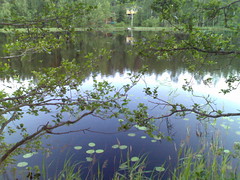In Mexico City, there is a special brand of people, who work in the city, but live outside the limits of the Federal District. If they don’t work in the
area, which after all is one of the largest industrial zones in Latin
America, they live their early mornings and late evenings listening to
the radio in their car while being stuck in the Periférico, the local
12-lane ring road, jokingly referred to as the largest parking lot in
the world.
Being a suburban boy means that, when growing up, crossing the city limits towards el D.F. was a day-long excursion, whereas going to the south was more like being in another city. When coming back, being greeted by “las torres de Satélite” was comforting, as you knew you where in a familiar place.
Where I grew up, you would meet people at the mall (Plaza Satélite, the first one and still one of the largest in the country) for a cup of coffee to catch up with life. Now that they all work, you assume they’ll be there after 7. Funnily enough, this area of the city until recently didn’t have a very strong identity like Coyoacán and la Roma, being relatively new (developed since the 1950’s, but with large-scale urbanisation until the 1970’s). That is a status that an organisation called “Satelín Torres” wants to revert, trying to give a memory to this part of the city.
Although considered by the rest to be a cultural wasteland, where people sleep, shop, eat and generally aspire to the middle class ideal and if they are interested to go to a museum or a concert they’ll cross to el D.F., it has spawned a number of rock groups. Café Tacuba is of course the most renowned, but many other bands of the current indie movement come from this part of the city.
I started thinking about all this as I realised that it is my destiny to be a suburban guy, as I’ve lived in Espoo, suburb of Helsinki, for most of my time in Finland and that’s where I’m headed when I move back. Furthermore, it feels really familiar, as instead of el Periférico they have Länsiväylä and instead of Plaza Satélite and Mundo E they have Iso Omena and Tapiola.
The time in Brussels has been an anomaly, more than the rule.


